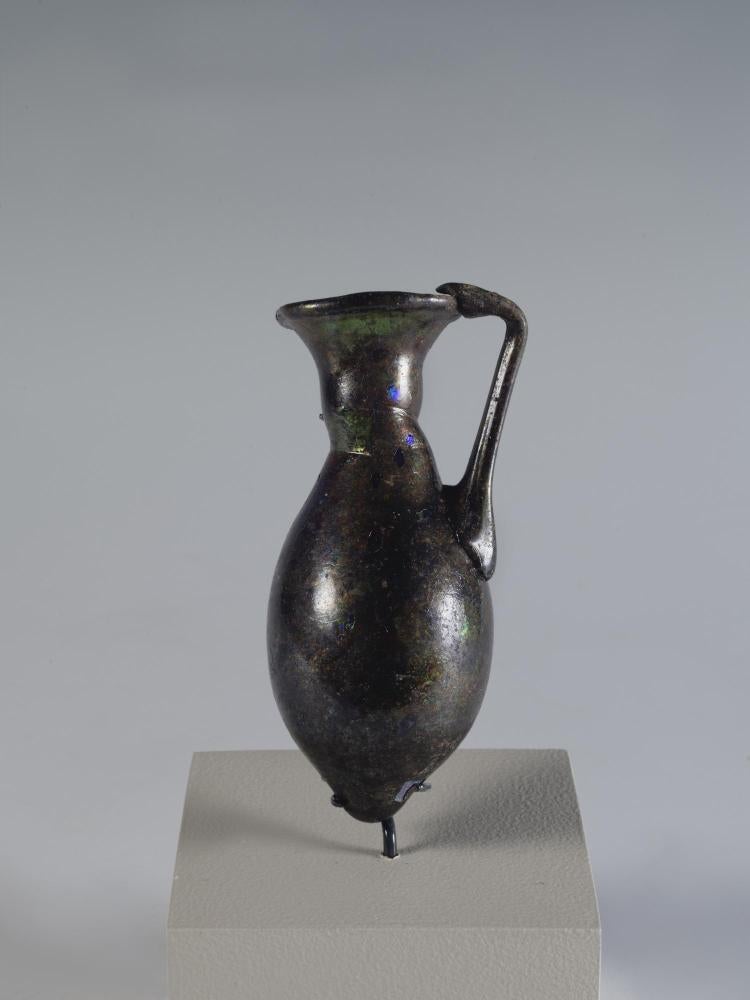2008.18.2.12, Roman Amphoriskos
Catalogue Entry 

From the Catalogue of Ancient Glass in the University of Colorado Museum
Gift of H. Medill Sarkisian and Justine Sarkisian Rodriguez (1979)
Transferred to CU Art Museum (2008)
Height: 9.5 cm
Diameter (max.): 4.4 cm
Roman, 1st century C.E.
Classification: Isings Form 120a; Harden Fabric 6
Description: Irregular rim, folded-in, with wide mouth. Handle on one side connects rim to shoulder with pronounced attachment points. Short, irregularly-formed neck. Pronounced, rounded shoulder. Ovoid body. Base tapers to a rounded point. Original color completely obscured by iridescence. Much flaking. Blown, handle added separately.
Comment: The shape of this jug, which has also been described as "bomboid," is straightforward, yet it is difficult to classify. Isings Form 120a has a small base ring, but not a point. The shape of the body is closer to Form 60 (amphoriskos with a pointed base). Direct parallels are not forthcoming. Mariacher 1961, pl. 17; Hayes 1975, no. 284; and Constable-Maxwell Collection 1979, lot 255, have globular bodies rather than ovoid, and Hayes 1975, nos. 286 and 339 have similar bodies except for the flattened base and pour spout. Hayes 1975, no. 415 is close in shape, save for the ribs on the body. Perhaps the most similar is Charleston and Archer 1977, no. 8, which in all respects is very close to this jug except for the flattened base.
Discussion
We cannot be sure what the original color of the glass was, due to how the jug aged. The chemicals which made up the glass began to break down, causing iridescence. It became so severe that the color was concealed underneath the weathering and damage.
This vessel was originally identified as being a 3rd century C.E. production but was updated in 2017 to 1st century C.E. by Dr. Sarah James (CU Boulder) on the basis of its blue color.
The CU collection also contains a much earlier Eastern Mediterranean example of an amphoriskos.
References
- Catalogue of the Constable-Maxwell Collection of Ancient Glass. London: Maggs Brothers, 1979.
- Charleston, R. J. and M. Archer. Glass and Stained Glass. Fribourg: National Trust, Office du Livre, 1977.
- Hayes, J. W. Roman and Pre-Roman Glass in the Royal Ontario Museum. Toronto: 1975.
- Mariacher, G. Italian Blown Glass from Ancient Rome to Venice. New York: McGraw-Hill, 1961.

